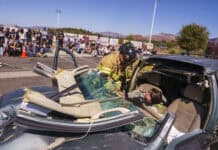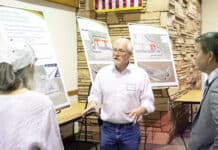Help Wanted: The city of Sedona is searching for a consulting team to help turn the West Sedona corridor of Highway 89A into a pedestrian-friendly, vibrant community. Consultants costing more than $450,000 need not apply.
On Nov. 25, Sedona City Council directed city staff to look for a consulting team for a scope of work for the West Sedona Redevelopment Plan.
By Alison Ecklund
Larson Newspapers
Help Wanted: The city of Sedona is searching for a consulting team to help turn the West Sedona corridor of Highway 89A into a pedestrian-friendly, vibrant community. Consultants costing more than $450,000 need not apply.
On Nov. 25, Sedona City Council directed city staff to look for a consulting team for a scope of work for the West Sedona Redevelopment Plan.
The motion passed, 7-0, with two stipulations — the plan extends along Highway 89A from Pinon Drive to the Brewer/Ranger Road area and has a budget of $450,000.
Some councilors expressed concern about spending the money on the consultant without the city knowing how it will pay for the actual project.
“Design and all is great,” Councilwoman Pud Colquitt said, “but where’s the money to go forth?”
That is the question, Senior Long Range Planner Mike Raber said.
“Are we going to be able to fund that?” he asked. “It is a big unknown.”
Staff will issue Request for Proposals this month and hopes to retain a consultant by March.
The scope of work will include a citywide traffic study, an origin-destination study and an economic analysis.
With over 83 percent of the city’s commercial land area already developed, the need for a redevelopment plan is one of council’s top priorities, since most of the growth in the commercial area is happening through redevelopment.
City staff is proposing Form-Based Codes to give West Sedona a small-town feel and a deep sense of community that many
residents, stakeholders and council are looking for.
Under existing city zoning codes, it is impossible to predict exactly how buildings, parking and other features will occur, but FBCs would change all that.
Prepared through a collaborative process involving property owners, stakeholders, city staff and the public, FBCs are geared to the site and what the site is going to look like, Raber said.
So far, the city has spent $25,000 educating city staff on the new form of codes.
Scope of Work
Including public input, producing workable incentives so developers will want to use Form-Based Codes and highway safety are three things staff is stressing to the applicants.
The city’s goal is to successfully engage the public, stakeholders and local design and planning professionals throughout the entire process.
“We want a process that is very open between council, staff, the consultant, the community and a local planning team,” Raber said.
Staff is asking the consultant to come up with workable incentives for development and redevelopment to occur according to the plan and codes.
“The key will be incentives,” Raber said. “What will be more attractive to developers to implement a development code rather than our existing codes.”
The city is also looking for a consulting team that will design a safe and efficient roadway
that is successfully integrated
with building location and
design.
The highway plan needs to look at safety and access to businesses, Raber said, and provide a much more welcoming pedestrian environment.
The consultant will be asked to coordinate with an Arizona Department of Transportation assessment regarding the pros and cons of the city taking over the highway from ADOT.
The consulting team will also look at two previous studies — a 1996 Highway Corridor Assessment, Traffic Model and Origin-Destination Study and a West Sedona Commercial Corridor Study from 1994 — which still have some useful data, Raber said.
Staff is hoping the consultant can finish the first phase within 18 months and then present the scope, time line and report to City Council.





















